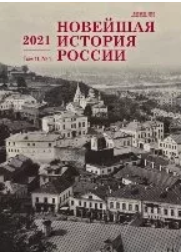Формирование бюджета комсомольских организаций в 1960-е годы
Formation of the Budget of the Komsomol Organizations in the 1960s
Author(s): Elena Viktorovna BureevaSubject(s): Economic history, Economic policy, Post-War period (1950 - 1989), Fiscal Politics / Budgeting
Published by: Издательство Исторического факультета СПбГУ
Keywords: Komsomol; budget; finances; raised funds; financial report;
Summary/Abstract: In the 1960s the state funding of the Komsomol ended, and the formation of the budget of the Central Committee of the Komsomol and regional committees became an issue of great interest. This issue can be better explored by complex financial documents of the Komsomol committees, which are introduced into circulation here for the first time. They show that the main source of income was membership fees, which explains the intensification of work to attract young people to the Komsomol and strict control over the timely payment of membership fees. The second means of replenishing the budget were funds raised by collecting scrap metal and waste paper, holding amateur concerts, and similar projects. However, this did not provide enough funding, and so the Komsomol Central Committee introduced austerity measures and began additional fundraising through various lotteries, selling literature, holding subbotniks and voskresniks, and the like. An analysis of archival documents shows that countryside committees found themselves in a more difficult situation than those in cities, which had more opportunities to earn money; and rural committees’ expenses were much higher. This explains the absence of “houses of culture” and stadiums in villages, which were built mainly by the Komsomol. The party leadership stopped subsidizing the Komsomol, but still actively used young people to solve important economic problems (e. g. construction of large facilities in urban and rural settings, maintaining student construction teams, etc.), the implementation of which also fell on the Komsomol budget. Thus, financial documents allows us not only to trace the formation of revenues and expenditures, but also the working conditions of Komsomol organizations in cities and the countryside.
Journal: Новейшая история России
- Issue Year: 11/2021
- Issue No: 35
- Page Range: 489-505
- Page Count: 17
- Language: Russian

